This article was medically reviewed by Lacy Windham, MD. Lacy Windham, MD, is a Board-Certified Obstetrician & Gynecologist in Cleveland, Tennessee. Dr. Windham attended medical school at the University of Tennessee Health Science Center in Memphis. Her residency was completed at Eastern Virginia Medical School in Norfolk, Virginia. She was the recipient of multiple awards during her residency training, including Most Outstanding Resident in Maternal Fetal Medicine, Most Outstanding Resident in Oncology, Most Outstanding Resident Overall, and Special Award in Minimally Invasive Surgery.
wikiHow marks an article as reader-approved once it receives enough positive feedback. In this case, 83% of readers who voted found the article helpful, earning it our reader-approved status.
This article has been viewed 1,414,955 times.
A miscarriage is when a woman loses a pregnancy before the 20th week. It’s impossible to know how many pregnancies end in miscarriage, since many occur before the woman even knows she’s pregnant. But for women who know they are pregnant, the estimates range from 10 to 20 percent.[1] [2] If you think you are having a miscarriage, get medical help immediately.
Steps
Identifying the Symptoms
-
1Call your physician or go to the emergency room if tissue, fluid, or what appears to be clumps of blood come out of your vagina. This could mean that you are miscarrying. Depending on how far along you are, and how heavy you are bleeding, your doctor may recommend you go to the emergency room, or that you wait to be seen during office hours.
- If you do pass tissue that you think might be fetal tissue, put it in a clean, sealed container and take it with you to the doctor.
- Taking the tissue with you may seem strange, but the doctor will be able to test it to confirm whether it was fetal tissue.
-
2Recognize that you may be at risk of miscarrying if you have spotting or vaginal bleeding. Many women have bleeding, but do not miscarry. However, it is safest to call your doctor immediately to see if you need to visit the ER.[3]
- You may also experience cramping. Sometimes it may feel like a strong tugging-like sensation inside, as if something is being pulled. If you have strong cramping, it is another sign that you should see a doctor quickly.
-
3Take note if you experience lower back pain. Back pain, abdominal discomfort, or cramping may be signs that you are miscarrying, even if you have no bleeding.[4]
- Contact your doctor before taking any pain medication.
-
4Recognize the symptoms of a septic miscarriage. This occurs when a woman has an infection in her uterus and miscarries. It is dangerous for the woman’s health and requires immediate medical care. Symptoms include:[5]
- Fluid coming from your vagina that smells bad.
- Vaginal bleeding.
- Fever and chills.
- Cramping and pain in your abdomen.
Knowing What to Expect at the Doctor’s Office
-
1Get a medical check-up. There are several tests and exams that your doctor will probably do to determine whether you have lost the pregnancy.[6]
- The doctor will likely do an ultrasound to see if the fetus is visible in your womb. If so, the ultrasound will also let the doctor see if it is developing properly. If the fetus is old enough, it may be possible to check the heartbeat.
- Your doctor may do a pelvic exam to see if your cervix is opening.
- Blood tests will allow the doctor to measure your hormones.
- If you have passed tissue and brought it with you, your doctor can test it to confirm whether it is fetal tissue.
-
2Understand the diagnoses you may be given. There several possibilities:[7] [8]
- A threatened miscarriage is when you are showing signs that you may be about to miscarry. Not all threatened miscarriages actually miscarry. If you have cramps, or you are bleeding, but your cervix is not opening, then you may be diagnosed with a threatened miscarriage.
- If there is nothing the doctor can do to prevent a miscarriage, you will be diagnosed with an inevitable miscarriage. This diagnosis is likely if your cervix has opened, and your uterus is contracting to expel the fetus.
- A complete miscarriage occurs when all of the fetal and pregnancy tissues are expelled.
- An incomplete miscarriage is when you miscarry but some of the fetus or placenta is not passed out through your vagina.
- Missed miscarriage occurs when you do not pass the fetus or placenta even though the fetus has died.
-
3Follow your doctor’s advice if you have been diagnosed with a threatened miscarriage. Not all threatened miscarriages actually miscarry. However, depending on your situation, it may not be possible to prevent a miscarriage. Your doctor may recommend:[9]
- Resting until the symptoms stop.
- Not exercising.
- Abstaining from sex.
- Not traveling to areas where you will not be able to get quick, high quality medical care if you need it.
-
4Know what to expect if you have miscarried, but not passed all of the tissues. What your doctor recommends may depend on your preferences.
- You can wait to see if your body passes the remaining tissue on its own. This could take up to a month.
- You can take medication to induce your body to expel the tissue. This usually works quickly, sometimes within a day. The medication can be taken by mouth or by putting it directly into your vagina.
- If you are showing signs of infection, the doctor will dilate you and remove the tissue.
-
5Give yourself time to recover physically if you have miscarried. Chances are the recovery will be quick and you will be physically healthy within a few days afterwards.
- Know that your period may resume the following month. This means that you are physically capable of getting pregnant again immediately. If you do not wish to do so, use contraception.
- Allow your vaginal tissues 2 weeks to recover. During this time, don’t have sex or use tampons.
-
6Take the time to heal psychologically. Studies show that women who miscarry can grieve the same as those who lose a baby to stillbirth close to their due date. It is extremely important you give yourself time to grieve and surround yourself with supportive people to talk to.
- Get support from friends and family members that you trust.
- Seek out a support group.
- Most women who miscarry go on to have healthy pregnancies afterwards. A miscarriage probably does not mean that you won’t be able to have a baby.
Thinking about Future Pregnancies
-
1Understand the common causes of miscarriage. Many miscarriages occur because the baby wasn’t developing properly. This can occur for several reasons either arising from the genetic makeup of the fetus or from the mother’s health.[10]
- Genetic disorders in the fetus. These can be either inherited problems or problems occurring in that particular egg and sperm.
- Diabetes in the mother.
- An infection.
- Maternal hormonal imbalance.
- Thyroid problems.
- Disorders of the uterus or cervix.
-
2Lower your risk for future miscarriages as much as possible. While not all miscarriages can be prevented, there are some things that may make you more at risk.[11]
- Smoking.
- Drinking alcohol. Alcohol may cause irreversible harm to your baby even if you do not miscarry.
- Taking drugs. Avoid all street drugs if you are pregnant or attempting to become pregnant. Do not take any medications, even over-the-counter medications or herbal remedies, without first consulting your doctor.
- Diabetes.
- Being overweight or underweight.
- Problems with your reproductive organs, particularly the uterus or cervix.
- Environmental toxins.
- Infections.
- Immune disorders.
- Hormonal imbalances.
- Invasive prenatal tests such as amniocentesis or chorionic villus sampling
- The risk of miscarriage increases for women over the age of 35.
-
3Know what does not cause miscarriage. The following activities should not cause miscarriages under normal conditions. If your doctor advises you differently, follow your doctor’s advice.
- Moderate exercise.
- Having safe sex. Avoid infections.
- Working in jobs that do not raise your risk of being exposed to environmental toxins, infectious agents, chemicals, or radiation.
References
- ↑ http://www.nlm.nih.gov/medlineplus/ency/article/001488.htm
- ↑ https://www.nichd.nih.gov/health/topics/pregnancyloss
- ↑ http://www.nlm.nih.gov/medlineplus/ency/article/001488.htm
- ↑ http://www.nlm.nih.gov/medlineplus/ency/article/001488.htm
- ↑ http://www.nlm.nih.gov/medlineplus/ency/article/001488.htm
- ↑ https://www.pregnancybirthbaby.org.au/what-happens-after-miscarriage
- ↑ https://my.clevelandclinic.org/health/diseases/9688-miscarriage
- ↑ http://www.nlm.nih.gov/medlineplus/ency/article/001488.htm
- ↑ https://www.ncbi.nlm.nih.gov/pmc/articles/PMC6513446/
About This Article
Signs of miscarriage can include tissue, fluid, or clumps of blood coming out of your vagina, spotting, strong cramping, fever, chills, and back pain. If you have any of these symptoms, go to the emergency room right away for treatment. Once you’re at the doctor, they will likely do an ultrasound to see if the fetus is developing properly. They may also run a blood test to measure your hormone levels. Once the tests come back, the doctor can tell you whether or not you are miscarrying, and what kind of miscarriage you’re experiencing. If you’re diagnosed with a threatened miscarriage, you’ll need to rest and abstain from sex and exercise for as long as your doctor recommends. For more advice, like how to lower your risk for having a miscarriage, read more from our Medical co-author.




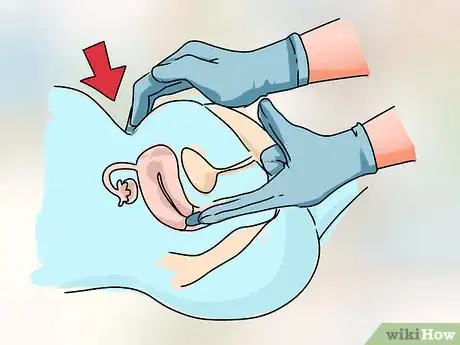
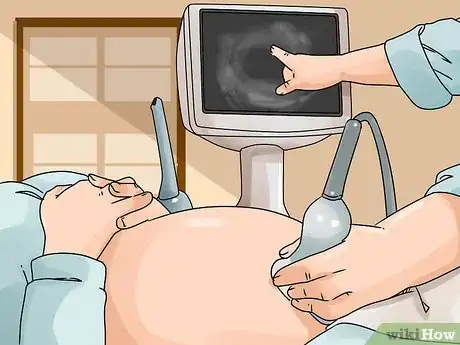

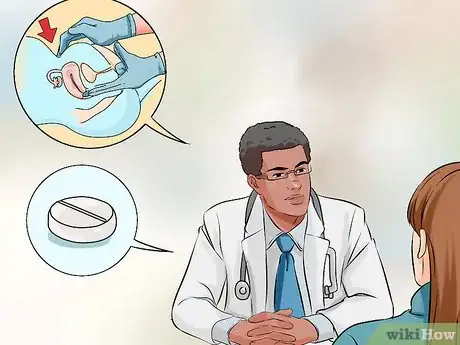
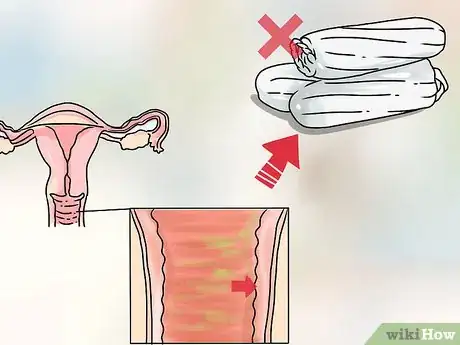

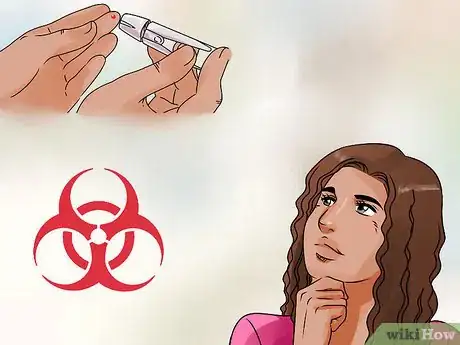



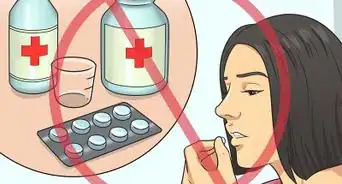






















































Medical Disclaimer
The content of this article is not intended to be a substitute for professional medical advice, examination, diagnosis, or treatment. You should always contact your doctor or other qualified healthcare professional before starting, changing, or stopping any kind of health treatment.
Read More...